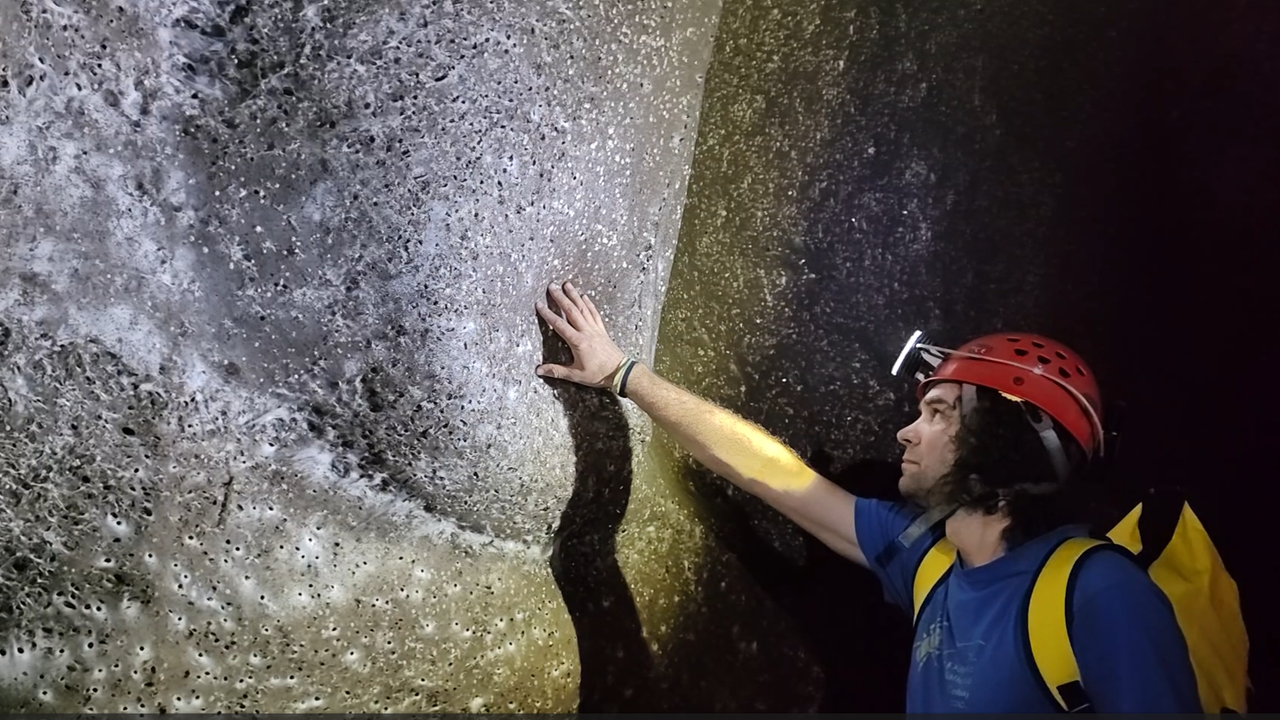
Researchers have discovered more than 111,000 spiders thriving in what appears to be the world's biggest spiderweb, deep inside a pitch-black cave on the Albanian-Greek border.
The "extraordinary" colony consists of a colossal web in a permanently dark zone of the cavern, according to a study published Oct. 17 in the journal Subterranean Biology. The web stretches 1,140 square feet (106 square meters) along the wall of a narrow, low-ceilinged passage near the entrance of the cave. It is a patchwork of thousands of individual, funnel-shaped webs, the researchers noted.
This is the first evidence of colonial behavior in two common spider species and likely represents the largest spiderweb in the world, said study lead author István Urák, an associate professor of biology at Sapientia Hungarian University of Transylvania in Romania.

"The natural world still holds countless surprises for us," Urák told Live Science in an email. "If I were to attempt to put into words all the emotions that surged through me [when I saw the web], I would highlight admiration, respect, and gratitude. You have to experience it to truly know what it feels like."
The spider megacity is located in Sulfur Cave, a cavern that was hollowed out by sulfuric acid formed from the oxidation of hydrogen sulfide in groundwater. While the researchers revealed tantalizing new information about Sulfur Cave's spider colony, they weren't the first to see the giant web. Cavers with the Czech Speleological Society discovered it in 2022 during an expedition in the Vromoner Canyon. A team of scientists then visited the cave in 2024, plucking specimens from the web that Urák analyzed before going on his own expedition to Sulfur Cave.
This analysis revealed that two spider species live in the colony: Tegenaria domestica, known as the barn funnel weaver or domestic house spider, and Prinerigone vagans. On their visit to the cave, Urák and his colleagues estimated there were about 69,000 T. domestica and more than 42,000 P. vagans specimens. DNA analyses for the new research also confirmed that these are the dominant species in the colony, Urák said.
Sulfur Cave's spider colony is one of the largest ever documented, and the species involved weren't previously known to assemble and cooperate in this way, Urák said. T. domestica and P. vagans are widespread near human dwellings, but the colony is "a unique case of two species cohabiting within the same web structure in these huge numbers," he said.

Scientists would normally expect barn funnel weavers to prey on P. vagans, but the lack of light in the cave may impair the spiders' vision, according to the study.
The spiders instead eat non-biting midges, which in turn feast on white microbial biofilms — slimy secretions that protect microorganisms against threats in their environment — from sulfur-oxidizing bacteria in the cave. A sulfur-rich stream fed by natural springs flows through Sulfur Cave, filling the cavern with hydrogen sulfide and helping microbes, midges and their predators survive, the researchers wrote in the study.

The spiders' sulfur-rich diet influences their microbiomes, causing them to be significantly less diverse than the microbiomes of spiders from the same two species outside the cave, gut content analyses revealed. Molecular data also showed that the spiders inside the cave were genetically different from their relatives living outside, suggesting the cave-dwellers have adapted to their dingy surroundings.
"Often, we think we know a species completely, that we understand everything about it, yet unexpected discoveries can still occur," Urák said. "Some species exhibit remarkable genetic plasticity, which typically becomes apparent only under extreme conditions. Such conditions can elicit behaviors that are not observed under 'normal' circumstances."
It's important to preserve the colony, despite challenges that might arise from the location of the cave between two countries, Urák said. In the meantime, the researchers are working on another study that will reveal further clues about Sulfur Cave's inhabitants, he added.







